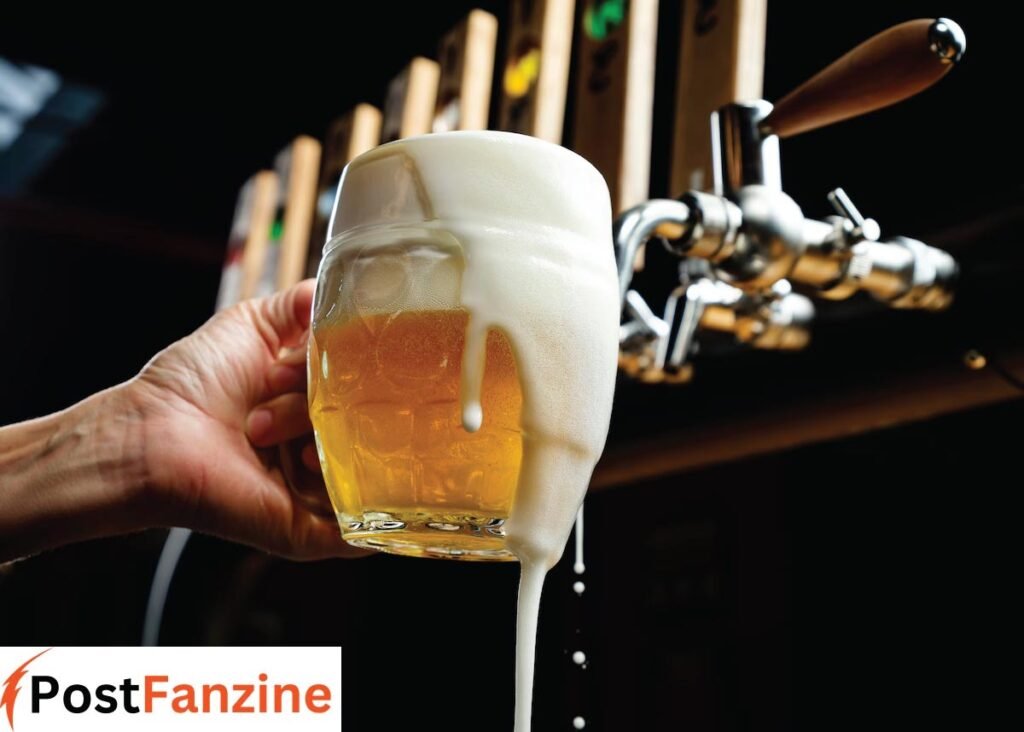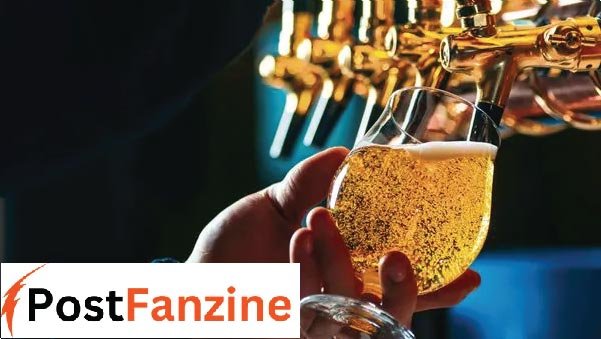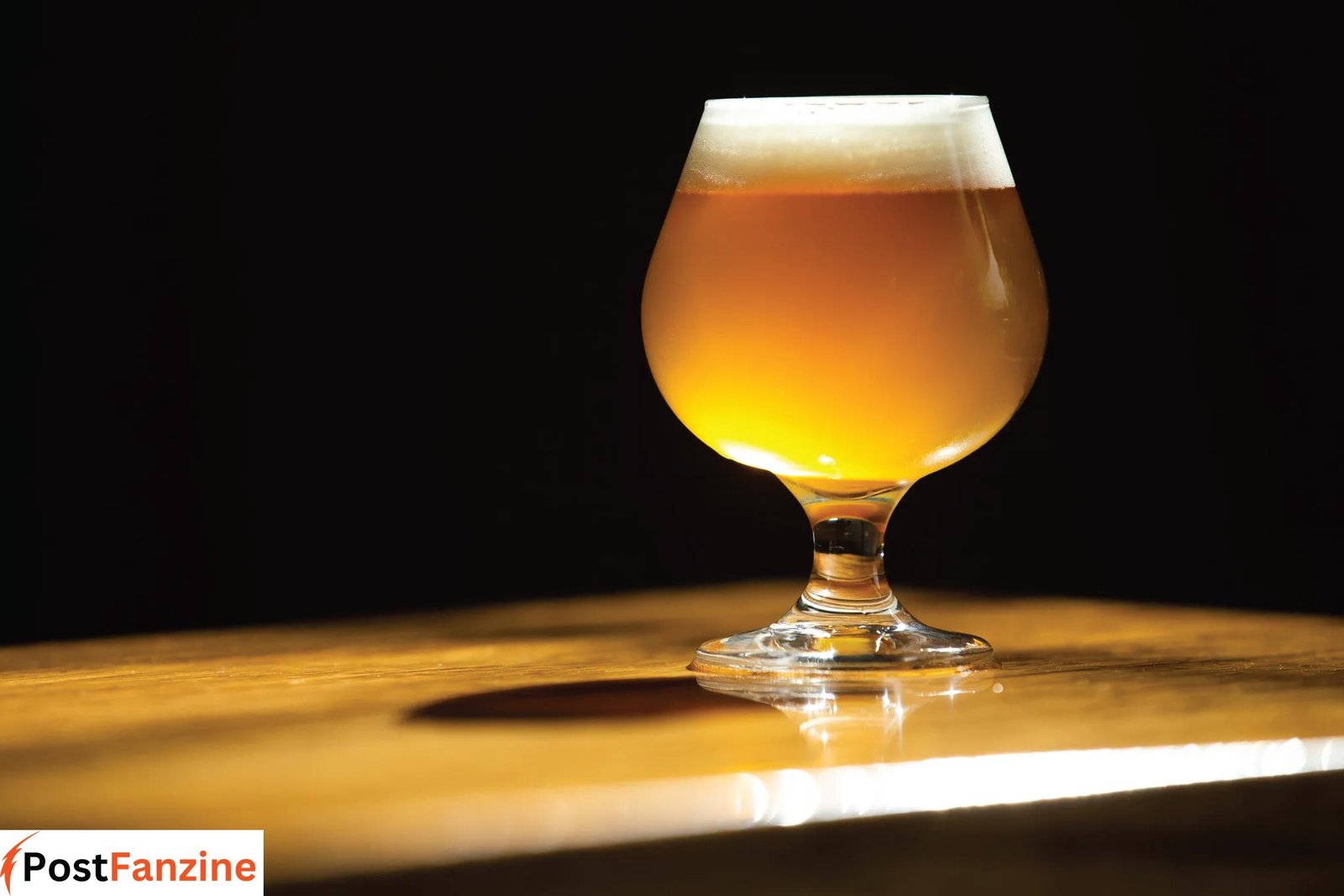Introduction
There’s something undeniably charming about the sound of a can hissing open, the sight of bubbles growing in a tumbler, and the primary sip of a chilly, Becomes Bubbly as Beer NYT hitting your palate. Whether it’s a smooth soda, a crisp beer, or a bottle of glowing water, the arena’s love affair with carbonation is as bubbling as the drinks themselves. But what exactly is it about those bubbly concoctions which have captured our imaginations and taste buds for loads of years?
In a present day exploration, The New York Times (NYT) delved into the fizzy fact behind carbonation, unraveling the technological expertise, history, and cultural significance of bubbles in liquids. The article sheds light on why those seemingly easy drinks have grown to be a staple in our regular lives, from their chemical composition to their effect on health and society.
As we dive into the NYT’s findings, we’ll discover how carbonation transforms a clean liquid into a sensory entertainment, why we crave the bubbles, and the way the Becomes Bubbly as Beer NYT enterprise has advanced over the years. Whether you’re a casual client or a gourmand of carbonated beverages, there’s extra to the customer bubbles that meet the eye—or the flavor buds.

The Science of Bubbles
At the heart of every Becomes Bubbly as Beer NYT lies a sensitive dance between liquid and gasoline, orchestrated with the aid of the presence of carbon dioxide (CO₂). When CO₂ is dissolved into a liquid below strain, it paperwork carbonic acid, giving the drink its feature sharpness and developing a supersaturated answer. When the pressure is launched—whether via popping the top of a bottle or can—this fuel escapes, forming the bubbles we all realize and love.
But those bubbles aren’t just a visible or textural satisfaction; they play a critical role within the ordinary taste profile of a beverage. The tingling sensation at the tongue, the moderate acidity that balances sweetness, and the way the bubbles appear to boost the drink’s flavors all make a contribution to the precise experience of eating a carbonated drink. This sensory delight is one of the primary motives why fizzy liquids have grown to be a worldwide phenomenon.
Furthermore, carbonation can act as a preservative, extending the shelf life of beverages by way of inhibiting the boom of spoilage microorganisms. This practical gain, mixed with the sensory appeal, has solidified the area of carbonated liquids in markets worldwide.
Bubbly Beginnings: A Brief History
The records of carbonated beverages are as bubbling as the liquids themselves. It all began in the late 18th century when scientists first found a way to artificially carbonate water. Joseph Priestley, an English chemist, is regularly credited with inventing the first carbonated water in 1767. His discovery brought about the creation of soda water, a precursor to the current smooth drinks we revel in today.
The 19th century noticed the economic manufacturing of carbonated drinks taking off, with businesses like Schweppes main the charge. The introduction of flavored syrups transformed soda water into what we now realize as smooth beverages, and the relaxation, as they say, is recorded.
But a lengthy earlier than soda water had become popular, another beverage has become already effervescent on the floor: beer. The natural fermentation method of brewing beer produces CO₂, which, when trapped in a sealed field, carbonates the liquid. This herbal fizz made beer one of the earliest recognized carbonated liquids, long earlier than the advent of contemporary soda.
Fizzy Drinks: From Soda to Sparkling Water
Today, the world of fizzy liquids is giant and varied, starting from sugary sodas to health-conscious sparkling waters. Each type of carbonated beverage offers a different experience, pushed by various stages of carbonation, flavors, and cultural contexts.
Sodas, with their excessive sugar content and synthetic flavors, have ruled the carbonated drink marketplace for decades. However, in recent years, there has been a substantial shift towards more healthy options, inclusive of sparkling water and low-sugar sodas. These drinks provide the identical pleasing fizz without guilt, attractive to a more health-aware purchaser base.
The debate over the health implications of carbonated drinks, especially sugary sodas, has been ongoing. Critics point to the hyperlinks between excessive soda consumption and diverse health issues, which include obesity, diabetes, and dental issues. On the other hand, proponents of sparkling water and different low-calorie fizzy liquids argue that those beverages may be a more fit opportunity for sugary sodas, offering hydration with a bit more excitement.
Interestingly, the extent of carbonation in a drink can drastically have an effect on its taste profile. Higher carbonation stages tend to decorate the belief of acidity, creating a drink that taste crisper and more cleaner. In assessment, lower carbonation degrees can permit for a fuller, smoother mouthfeel, making the drink experience greater giant.

Beer: The Original Fizzy Drink?
While soda is probably the first element that comes to mind whilst we think about carbonated beverages, beer holds the identity as one of the earliest—and maximum enduring—Becomes Bubbly as Beer NYT. The effervescence in beer is a natural byproduct of fermentation, wherein yeast converts sugars into alcohol and CO₂. In many beers, mainly the ones brewed with the usage of conventional techniques, the carbonation is completely herbal, a testament to the age-vintage brewing process.
Beer’s carbonation now not only contributes to its clean characteristics but also performs an important role in its flavor profile. The bubbles help launch risky compounds in the beer, enhancing its aroma and taste. This interplay between carbonation and flavor is one motive why beer has remained this type of cherished beverage across cultures and generations.
The cultural significance of beer’s fizz extends past its sensory appeal. In many societies, the act of pouring and enjoying a lager is steeped in subculture, with the foam or “head” on a lager frequently being visible as a signal of best. The bubbles in beer are not just a byproduct of fermentation; they’re a necessary part of the ingesting enjoyment.
The Modern Fizzy Drink Industry
The fizzy drink industry has come an extended way because of the days of Priestley and Schweppes. Today, it’s far a multi-billion-greenback global marketplace, with innovations constantly shaping the landscape. From craft sodas to artisanal glowing waters, the enterprise is continuously evolving to meet changing purchaser alternatives.
One of the most large tendencies in the current Becomes Bubbly as Beer NYT enterprise is the upward thrust of craft and artisanal liquids. Much like the craft beer motion, craft sodas and glowing waters emphasize high-quality components, unique flavors, and small-batch manufacturing. These beverages often cater to areas of interest, imparting consumers a more personalized and top class enjoyment.
Another critical trend is the push for sustainability within the production of carbonated drinks. Many groups are now specializing in decreasing their environmental impact, whether via using recyclable substances, minimizing water utilization, or enhancing energy performance in production techniques. This shift closer to sustainability reflects a developing purchase call for environmentally responsible products.
Fizzy Truths: What NYT Uncovered
The NYT’s deep dive into the world of fizzy liquids uncovers numerous charming truths about why we love carbonation and how it impacts us. One of the key findings is the psychological appeal of bubbles. The sensation of carbonation at the palate triggers a tactile response that is both stimulating and fulfilling. This is why many humans find Becomes Bubbly as Beer NYT more fulfilling than their nonetheless opposite numbers.
Another interesting discovery is the health effect of carbonation. While the health dangers related to sugary sodas are nicelydocumented, the NYT article explores how carbonation itself would possibly have an effect on our bodies. For example, carbonation can impact digestion, on occasion aiding in the comfort of indigestion and bloating. However, immoderate consumption of carbonated beverages can also lead to pain or exacerbate positive conditions, including acid reflux.
The NYT also highlights the cultural significance of carbonated beverages, noting how specific societies have embraced and adapted these liquids to match their personal culinary traditions. From the rise of kombucha in fitness-conscious circles to the iconic recognition of champagne in celebrations, carbonation has discovered a place in diverse cultural practices worldwide.

Global Perspectives on Fizzy Drinks
Carbonated beverages are an international phenomenon but how they may be perceived and fed on varies widely from one lifestyle to any other. In Europe, as an example, sparkling water is a staple, often desired over still water in many nations. In assessment, america has long been a stronghold of sugary sodas, though this fashion is slowly shifting as clients end up being extra fitness-conscious.
In Asia, carbonated beverages like Ramune in Japan or flavored sodas in India provide a completely unique twist on the global fashion. These drinks regularly contain nearby flavors and elements, making them distinct from the Western opposite numbers. The worldwide marketplace for fizzy liquids is considerable and numerous, with each vicinity contributing its own personal tackle to carbonation.
Trends and projections imply that the call for healthier, lower-sugar carbonated drinks will continue to grow internationally. This shift is pushed by way of increasing attention to health issues and a choice provides merchandise that provides both entertainment and well-being advantages. The international market for carbonated beverages is expected to evolve to these converting possibilities, with innovations in taste, method, and packaging changing the manner.
The Future of Fizzy Drinks
As we appear destination, numerous tendencies are likely to form the arena of fizzy beverages. One of the maxima distinguished is the upward push of tough seltzers—alcoholic glowing waters that have taken the beverage industry by using typhoon. These drinks combine the light, refreshing features of sparkling water with a low-calorie alcohol content, attractive to clients who need to enjoy a drink with out the heaviness of beer or the sweetness of conventional cocktails.
Another trend to observe is the growing reputation of kombucha and different fermented beverages. These beverages offer a herbal fizz, a way to the fermentation procedure, and are regularly advertised as wholesome alternatives to traditional sodas. With their specific flavor profiles and potential health advantages, fermented Becomes Bubbly as Beer NYT are poised to seize a growing proportion of the marketplace.
Consumer choices will keep to power innovation within the Becomes Bubbly as Beer NYT enterprise. As extra people are seeking out drinks that align with their health and well-being desires, companies will need to conform by using products that are all enjoyable and nutritious. This ought to mean greater low-sugar alternatives, new flavors, or even purposeful drinks that integrate carbonation with delivered fitness benefits.
More: Reddit
Conclusion
The global world of fizzy drinks is as dynamic and various because varied the bubbles that define them. From the scientific standards that give those beverages their fizz to the cultural importance they hold in societies around the globe, carbonated liquids have left an indelible mark on our culinary landscape. The NYT’s exploration of this topic is famous famous the complicated interplay between technological know-how, way of life, and consumer alternatives that has made fizzy beverages a cherished part of our every day lives.
As we pass into the future, the fizzy drink enterprise will continue to adapt, driven through innovation, sustainability, and a deeper knowledge of what makes those drinks so impossible to resist. Whether you’re sipping on a cold beer, enjoying a glass of sparkling water, or indulging in a sweet soda, there’s no denying the fizzy fact: bubbles make the entirety higher.



